Features
Some Vignettes of Italy

(Excerpted from Falling Leaves, an anthology of memoirs by LC Arulpragasam)
I need now to recount my sailing adventures, or shall we say, misadventures. Although I had never sailed before, I did not think twice before I shoved off on my own. On my first effort, with the wind at my back, I unfurled my sails in goose-wing style and was soon hurtling along at a whistling pace. I cannot describe the exhilaration of being one with the water and the wind, with the wind at my back and the gurgle of water in my wake. After about two hours, I reached the other side of the lake near Trevignano, just as the sun was setting.
It was quite an achievement and quite a view. So I sat in the boat, smoking a triumphant cigarette, while watching the beautiful sunset. It was only then that I realized that the wind that had helped me to cross the lake would now prevent me from returning. How I managed to return home– is the stuff of story books. It was a dark night – and I could not make out which was land and which was deeper water! I had to spend the night, partly in my boat and partly in the freezing water! Needless to say, I returned home only in the morning.
I had other sailing mishaps too. I had promised my daughter to take her to the airport in time to catch her flight. This was the first time that she was leaving home – to go to College far away in another continent: it as a big day for the family. I thought that there was time enough to go to the lake and return. At the lake, I could not resist the temptation of taking the boat out for a small spin on the lake. But I had not bargained with the prospect of capsizing! In the end, I just made it in time to catch the flight (fortunately the plane was a few minutes late), but not without raising the anxiety levels of my family, and especially of my daughter!
My happiest days in Italy were spent by this lake; and our most treasured memories are buried there. First, it cast a spell over me: even when we approached it over its surrounding hills: its sight alone overpowered me. Second, the surrounding villages, with their old cobbled streets and quaint houses takes us back to a long-gone age, bringing the past alive before our eyes. Here, we were able to enjoy the company of the old paisani of the village, the baker, the cobbler, the blacksmith, as well as the owners of the small trattorias by the water.
Thirdly and sadly, it was the only place where we spoke Italian, because we otherwise interacted only with FAO’s English-speaking families, whereas the lake gave us the chance to speak Italian. Fourthly, for the same reason, the only Italian friends we made in Italy were by virtue of our weekends spent there. Fifthly, I learned quite a bit about horticulture and viticulture through the fruit trees and vines that I planted, pruned and nurtured there with my own hands. Lastly, and most preciously, I have memories of the lake itself in all its moods: its calmness in the morning, its brisk (sailing) winds rising around noon, its tranquil sunsets and the lulling lap of its waves at night. In fact when I think of the lake, a great sense of calmness overcomes me, followed by an acute sense of loss, for that part of my life which I lost with it. It is what I miss most when I think of our 30 years in Italy.
Italian Greatness
We lived in Rome, Italy, for 30 years from 1966 to 1997. We bow in appreciation of its great people. The Italians have a long history of greatness, from Roman times through to the Renaissance and beyond.
Mussolini in his grandiose manner built a new city, just outside Rome. Among others, he built a monument to the Italian people in grand fascist style. On the façade of the building, he inscribed in bold letters a paean of praise to the greatness of the Italian people. It claimed that the Italian people were a people of writers, of painters, of sculptors, of thinkers, of navigators, of scientists, etc. When I first read it, I dismissed it as more of Mussolini’s bombast. But later, thinking about it, I realized that it was all true. Of writers there was Dante Alighieri; of painters, Rafael, da Vincil and many others; of sculptors, Michelangelo and Donatello; of navigators, Cristoforo Colombo and Amerigo Vespucci; of astronomers, Galileo; of scientists, da Vinci and Enrico Fermi, etc. This is a real tribute to the Italian people. As individuals, they are unmatched. It is only that their institutions do not work!
Colour Conscious?
As far back as Roman times, there was no colour bar. In Caesar’s time, the Romans were more worried about the length of Cleopatra’s nose rather than about her colour. Besides, some of the last Roman Emperors were from the Middle East. In the ‘sixties and ‘seventies the Italians did not share the colour restrictions that characterized the northern imperial powers, such as Britain, the Netherlands and Germany. This was because the Mediterranean countries shared the mixture of ethnicities and cultures of their region. While the northern European colonizers frowned on miscegenation, making it a dirty word, the southern European colonizers even encouraged it, as the Spanish did in Latin America.
In the early days (1970s), when I had capsized (my boat) in a lake near Rome, I made my way to the road, clad only in my swimsuit. Competing cars screeched to a halt in order to give me a ride: they did not seem to mind my colour. After I reached my own car, I sped home on the autostrada, clad only in my swimsuit, with no money or clothes since they were all at the bottom of the lake, leaving me with only my dark skin. When I came up to the payment booth in the autostrada, I had no money to pay the toll. The uniformed guards who manned the gate, seeing my plight, contributed their own money to let my car through the automated gates. My colour proved to be a plus factor, not a minus one.
It all changed with unbridled immigration. One has only to go to the Termini now, the main railway station in Rome, to see the number of migrants from all regions of the world, hanging around until they could find a job. An Italian colleague, who was a communist and very pro-immigration, got fed up when she was accosted at so many traffic lights (12 times each way, to the office and back) by immigrants offering to clean her car windscreen. After months of encouraging this, she cried ‘Basta’ (enough!). A dramatic increase in the number of coloured immigrants without employment had morphed into a ‘colour problem’.
After a time, some newspapers carried lurid stories associating immigrants with crime. This brings me to my own story. Much later (in the 1990s), when returning from a supermarket, I saw a little old lady returning from the same store, staggering under the weight of two heavy bags in each hand. Since I was walking in the same direction, I went up to the old lady and asked: “Signora, can I help you to carry those bags?” Even I was not ready for her reaction: “No, no”, she shrieked shrilly, physically recoiling, as if I were a thief! I made off hastily like a real thief, since everyone was looking at me as if I was one! This is what unchecked immigration can do: it can easily change another problem into a colour problem!
Argumentative
In 1967, when we had just arrived in Rome, we were trying to reach some place in town. Having gone through the warren of old streets in Rome, we were completely lost. So we drew up to an ‘island’ between tramlines. We asked two gentlemen who were waiting there, directions to the street that we were seeking. One said: go straight to the next traffic light and turn right. The other contradicted him, exclaiming, gesturing with his hands: ‘No, no: go straight and then turn left’. They went on arguing hotly whether we should turn left or right, while we looked on impatiently, with cars honking loudly behind us. In the end, we had to move on because of the wild honking. Looking back in the rear-view mirror, I found to my amusement and amazement that the two had moved from verbal argumentation to physical assault! All this in order to help a stranger!
I was also to witness their arguments in the 1970s and early 1980s. At that time, the Italians had no third-party insurance for their cars. When there was an accident, it mattered most who shouted the most, arguing loudly in order to prove that the other party was at fault and should pay for the repairs. Once, I saw a lady with an infant in her arms, rocking it violently to the rhythm of her shouting. As she got more worked up, she put the infant on the ground, so as to better use her hands in the argument! All the shouting matches ceased when third-party motor insurance was made compulsory by law! Their institutions had failed them: so they had to shout at each other!
How to Talk: My Hands were Tied, No?
Once when walking, I saw a woman talking in a public telephone on the pavement. The woman was holding the phone in one hand, with a large handbag hanging over her shoulder and cigarette in her mouth. Soon she started using her free hand, while continuing to puff wildly on the cigarette. Seeing that it was not enough, she put the phone under her chin, so as to gesticulate with both hands. Since her handbag was slipping from her shoulder, she threw it on the ground, and also threw away her cigarette, so that she could use both hands better. The spectacle of her doing all this, sticks in my mind’s eye, even after 40 years!
You may have heard this joke before; but I repeat it as a caricature of Italians speaking with their hands. Three Allied soldiers were captured by the Germans in WWII: one British, one French, and one Italian. Each was tortured to extract information on where the Allied formations were camped. First, the British soldier was severely tortured, so that despite his renowned stiff upper lip, he broke down and spilled the beans. Second, the French soldier was treated to the same, and after repeated torture, he too broke down and spilled the beans. The Italian soldier was severely tortured repeatedly, but he would not speak. When he returned to the prison, the British and French soldiers asked him how he could have withstood such torture without divulging any information. To which the Italian replied: “How to talk: my hands were tied, no?”
Bella Figura!
In the 1960s and 1970s, it was ‘the done thing’ for Italians to go to the beach in summer. Some families who could not afford it also went on borrowed money, while others only pretended to do so. The latter would tell their neighbours and people living down their street that they were going to the sea. They could be seen packing for the beach, even loading their beach-chairs on top of their cars. They would leave at 5 a.m., as advertised. They would then smartly drive to their mother-in-law’s house at the other end of town, where they would lie low for the duration of their fabulous trip to the sea. At the appointed time they would return, full of stories of their fantastic time at the beach, cutting indeed a bella figura! (This happened in the 1960s. I do not think that it is happening now).
Italian Drivers
The Italians are the most skilled drivers in the world, flashing their headlights to signal that they are going through, avoiding accidents by a hair’s-breadth. However, this almost caused the death of my friend Reggie Arnolda, who was working in Rome at that time (about 1975). Reggie was driving his Peugot 404 Station-Wagon on a main avenue in Rome with many traffic lights. As he came to a traffic light, it was turning from amber to red. Naturally, Reggie came to a complete stop. The Italian driver just behind him, assuming that Reggie would speed through the traffic light, as Italians did in those days, stamped on his accelerator to speed through the light. This resulted in a big crash, with Reggie’s station wagon accordioning, so that the back number plate coming to rest on his neck. One inch more – and Reggie would be dead!
After many years in Italy, I too came to drive like the Italians – just in order to survive! Once, when my wife was driving, we came to a traffic light where the light was turning from amber to red. I shouted excitedly to her to speed through. But she came to a complete stop, with Italian horns blaring, throwing the whole piazza into confusion! I asked her reproachfully, why she didn’t shoot through the red light. She replied, “but the light was red, no?” She added with irrefutable logic: “Then what should I do when the light turns green?” I was stumped!
Cloak and Dagger!
One night, my wife and I were walking from the opera with an Italian couple. The man was an old-world Italian gentleman, who when introduced to a lady would bring his heels together, bow and kiss her hand. We were walking in the shadow of the ancient buildings of Rome, while cars and scooters were zipping past us. While my Italian friend was walking ahead with my wife, I noticed that he was walking on the inner side of the street, leaving my wife on the outer side, unprotected from the roaring traffic. Finally, my curiosity overcame me and I asked him why he was not following the usual practice of walking on the outer side of the lady.
He explained that he was following the practice of old Italy. When assassins or robbers wanted to attack someone, they hid in the shadows of the old buildings. So the gallant gentlemen of yore guarded their fair ladies by walking on the inner side, nearer the dark buildings, rather than on the outer side. My friend was just following the practice of old Italy.
Immigrant Tales
It is interesting to note the different levels and types of migration from poor countries to the more developed. Qualified professionals, like doctors, engineers and accountants migrated to English-speaking countries (like England, Australia and the USA) because they were already proficient in the language for jobs in their own professions. On the other hand, unskilled workers were prepared to go to any country (France, Germany or Italy), because knowledge of the language was not required for unskilled work. This was the reason for the great migration of unskilled youth to Italy. Sociological studies also show that the first migrants to unknown shores tend to be the adventurers or ‘ne’er-do-wells’, since persons with stable jobs would not risk a leap into the unknown.
My first story is in regard to an unattached man, who got a job as a domestic ‘do-all’ in a single-member family. In order to impress his family and friends back home, he sent a photo of himself. But first, he pulled his employer’s TV set, his employer’s music console and all the telephones in the house around his employer’s bed, to show how important he had become. He then wore his employer’s posh shirt and got into his employer’s posh bed. Then, while appearing to speak importantly on the phone, he had his friend take a photo. When the photo was sent home and did the rounds in the village, every young man was jumping to go to Italy!
In the ‘eighties and ‘nineties, middlemen had got into the act. The cost of getting into Italy had grown significantly. Migrants had to mortgage or sell their properties to pay the middlemen, while bearing all the risk and cost of failure themselves. One story sums it all. Three families decided to take the risk. They mortgaged/sold their properties so as to pay the middleman upfront. They were then taken to Hambantota, where the boat (probably a fishing trawler) was awaiting them. They embarked with much trepidation, because they knew that they had burned their boats back home.
After traveling for about seven days at sea, one night the captain showed them the lights of Italy. It was night when the boat reached the shore. When telling them to disembark, he warned them to hide in the bushes till daybreak. They should then walk cautiously in twos and threes into the nearby town. They followed his instructions to the letter. At dawn, they cautiously entered the town: only to find that they were back in Hambantota in Sri Lanka, the place where they had embarked! You can imagine their chagrin and dismay – to find that they were not in Italy but back in Sri Lanka! They had been literally taken for a ride! They now had to return to their villages – to face humiliation, indebtedness and despair.
Features
Trade preferences to support post-Ditwah reconstruction
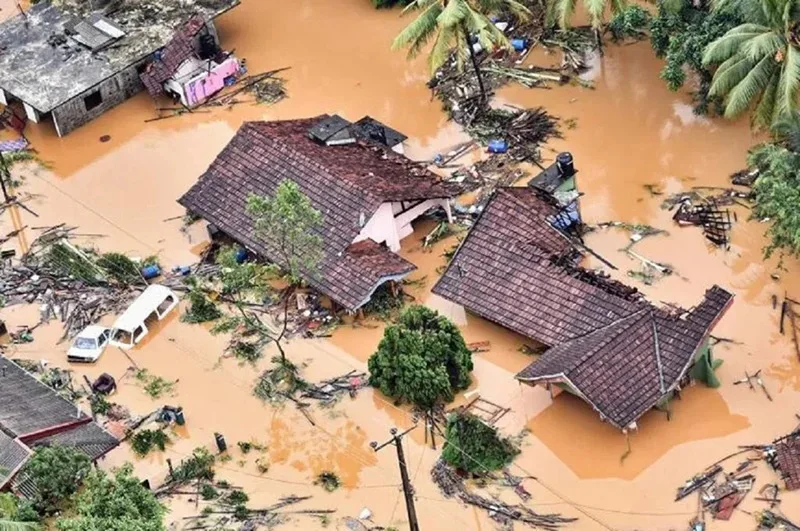
The manner in which the government succeeded in mobilising support from the international community, immediately after the devastating impact of Cyclone Ditwah, may have surprised many people of this country, particularly because our Opposition politicians were ridiculing our “inexperienced” government, in the recent past, for its inability to deal with the international community effectively. However, by now it is evident that the government, with the assistance of the international community and local nongovernmental actors, like major media organisations, has successfully managed the recovery efforts. So, let me begin by thanking them for what they have done so far.
Yet, some may argue that it is not difficult to mobilise the support for recovery efforts from the international community, immediately after any major disaster, and the real challenge is to sustain that support through the next few weeks, months and years. Because the recovery process, more specifically the post-recovery reconstruction process, requires long-term support. So, the government agencies should start immediately to focus on, in addition to initial disaster relief, a longer-term strategy for reconstruction. This is important because in a few weeks’ time, the focus of the global community may shift elsewhere … to another crisis in another corner of the world. Before that happens, the government should take initiatives to get the support from development partners on appropriate policy measures, including exceptional trade preferences, to help Sri Lanka in the recovery efforts through the medium and the long term.
Use of Trade Preferences to support recovery and reconstruction
In the past, the United States and the European Union used exceptional enhanced trade preferences as part of the assistance packages when countries were devastated by natural disasters, similar to Cyclone Ditwah. For example:
- After the devastating floods in Pakistan, in July 2010, the EU granted temporary, exceptional trade preferences to Pakistan (autonomous trade preferences) to aid economic recovery. This measure was a de facto waiver on the standard EU GSP (Generalised Scheme of Preferences) rules. The preferences, which were proposed in October 2010 and were applied until the end of 2013, effectively suspended import duties on 75 types of goods, including textiles and apparel items. The available studies on this waiver indicate that though a significant export hike occurred within a few months after the waiver became effective it did not significantly depress exports by competing countries. Subsequently, Pakistan was granted GSP+ status in 2014.
- Similarly, after the 2015 earthquakes in Nepal, the United States supported Nepal through an extension of unilateral additional preferences, the Nepal Trade Preferences Programme (NTPP). This was a 10-year initiative to grant duty-free access for up to 77 specific Nepali products to aid economic recovery after the 2015 earthquakes. This was also a de facto waiver on the standard US GSP rules.
- Earlier, after Hurricanes Mitch and Georges caused massive devastation across the Caribbean Basin nations, in 1998, severely impacting their economies, the United States proposed a long-term strategy for rebuilding the region that focused on trade enhancement. This resulted in the establishment of the US Caribbean Basin Trade Partnership Act (CBTPA), which was signed into law on 05 October, 2000, as Title II of the Trade and Development Act of 2000. This was a more comprehensive facility than those which were granted to Pakistan and Nepal.

What type of concession should Sri Lanka request from our development partners?
Given these precedents, it is appropriate for Sri Lanka to seek specific trade concessions from the European Union and the United States.
In the European Union, Sri Lanka already benefits from the GSP+ scheme. Under this arrangement Sri Lanka’s exports (theoretically) receive duty-free access into the EU markets. However, in 2023, Sri Lanka’s preference utilisation rate, that is, the ratio of preferential imports to GSP+ eligible imports, stood at 59%. This was significantly below the average utilisation of other GSP beneficiary countries. For example, in 2023, preference utilisation rates for Bangladesh and Pakistan were 90% and 88%, respectively. The main reason for the low utilisation rate of GSP by Sri Lanka is the very strict Rules of Origin requirements for the apparel exports from Sri Lanka. For example, to get GSP benefits, a woven garment from Sri Lanka must be made from fabric that itself had undergone a transformation from yarn to fabric in Sri Lanka or in another qualifying country. However, a similar garment from Bangladesh only requires a single-stage processing (that is, fabric to garment) qualifies for GSP. As a result, less than half of Sri Lanka’s apparel exports to the EU were ineligible for the preferences in 2023.
Sri Lanka should request a relaxation of this strict rule of origin to help economic recovery. As such a concession only covers GSP Rules of Origin only it would impact multilateral trade rules and would not require WTO approval. Hence could be granted immediately by the EU.
United States
Sri Lanka should submit a request to the United States for (a) temporary suspension of the recently introduced 20% additional ad valorem duty and (b) for a programme similar to the Nepal Trade Preferences Programme (NTPP), but designed specifically for Sri Lanka’s needs. As NTPP didn’t require WTO approval, similar concessions also can be granted without difficulty.
Similarly, country-specific requests should be carefully designed and submitted to Japan and other major trading partners.
(The writer is a retired public servant and can be reached at senadhiragomi@gmail.com)
by Gomi Senadhira
Features
Lasting power and beauty of words
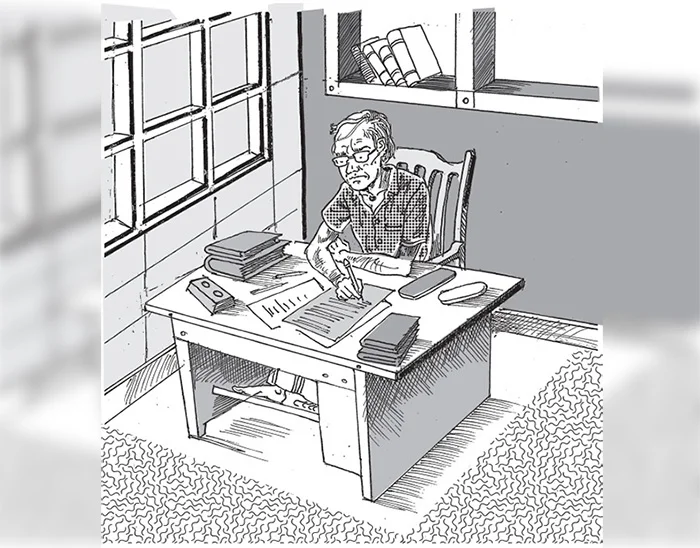
Novelists, poets, short story writers, lyricists, politicians and columnists use words for different purposes. While some of them use words to inform and elevate us, others use them to bolster their ego. If there was no such thing called words, we cannot even imagine what will happen to us. Whether you like it or not everything rests on words. If the Penal Code does not define a crime and prescribe a punishment, judges will not be able to convict criminals. Even the Constitution of our country is a printed document.
A mother’s lullaby contains snatches of sweet and healing words. The effect is immediate. The baby falls asleep within seconds. A lover’s soft and alluring words go right into his or her beloved. An army commander’s words encourage soldiers to go forward without fear. The British wartime Prime Minister Winston Churchill’s words still ring in our ears: “… we shall defend our Island, whatever the cost may be, we shall fight on the beaches, we shall fight on the landing grounds, we shall fight in the fields and in the streets, we shall fight in the hills; we shall never surrender …”
Writers wax eloquent on love. English novelist John Galsworthy wrote: “Love is no hot-house flower, but a wild plant, born of a wet night, born of an hour of sunshine; sprung from wild seed, blown along the road by a wild wind. A wild plant that, when it blooms by chance within the hedge of our gardens, we call a flower; and when it blooms outside we call a weed; but flower or weed, whose scent and colour are always wild.” While living in a world dominated by technology, we often hear a bunch of words that is colourless and often cut to verbal ribbons – “How R U” or “Luv U.” Such words seem to squeeze the life out of language.
Changing medium
Language is a constantly changing medium. New words and forms arrive and old ones die out. Whoever thought that the following Sinhala words would find a place in the Oxford English Dictionary? “Asweddumize, Avurudu, Baila, Kiribath, Kottu Roti, Mallung, Osari, Papare, Walawwa and Watalappan.” With all such borrowed words the English language is expanding and remains beautiful. The language helps us to express subtle ideas clearly and convincingly.
You are judged by the words you use. If you constantly use meaningless little phrases, you will be considered a worthless person. When you read a well-written piece of writing you will note how words jump and laugh on the paper or screen. Some of them wag their tails while others stand back like shy village belles. However, they serve a useful purpose. Words help us to write essays, poems, short stories and novels. If not for the beauty of the language, nobody will read what you write.
If you look at the words meaningfully, you will see some of them tap dancing while others stand to rigid attention. Big or small, all the words you pen form part of the action or part of the narrative. The words you write make your writing readable and exciting. That is why we read our favourite authors again and again.
Editorials
If a marriage is to succeed, partners should respect and love each other. Similarly, if you love words, they will help you to use them intelligently and forcefully. A recent survey in the United States has revealed that only eight per cent of people read the editorial. This is because most editorials are not readable. However, there are some editorials which compel us to read them. Some readers collect such editorials to be read later.
Only a lover of words would notice how some words run smoothly without making a noise. Other words appear to be dancing on the floor. Some words of certain writers are soothing while others set your blood pounding. There is a young monk who is preaching using simple words very effectively. He has a large following of young people addicted to drugs. After listening to his preaching, most of them have given up using illegal drugs. The message is loud and clear. If there is no demand for drugs, nobody will smuggle them into the country.
Some politicians use words so rounded at the edges and softened by wear that they are no longer interesting. The sounds they make are meaningless and listeners get more and more confused. Their expressions are full of expletives the meaning of which is often soiled with careless use of words.
Weather-making
Some words, whether written or spoken, stick like superglue. You will never forget them. William Vergara in his short essay on weather-making says, “Cloud-seeding has touched off one of the most baffling controversies in meteorological history. It has been blamed for or credited with practically all kinds of weather. Some scientists claim seeding can produce floods and hail. Others insist it creates droughts and dissipates clouds. Still others staunchly maintain it has no effect at all. The battle is far from over, but at last one clear conclusion is beginning to emerge: man can change the weather, and he is getting better at it.”
There are words that nurse the ego and heal the heart. The following short paragraph is a good example. S. Radhakrishnan says, “In every religion today we have small minorities who see beyond the horizon of their particular faith, not through religious fellowship is possible, not through the imposition of any one way on the whole but through an all-inclusive recognition that we are all searchers for the truth, pilgrims on the road, that we all aim at the same ethical and spiritual standard.”
There are some words joined together in common phrases. They are so beautiful that they elevate the human race. In the phrase ‘beyond a shadow of doubt’, ‘a shadow’ connotes a dark area covering light. ‘A doubt’ refers to hesitancy in belief. We use such phrases blithely because they are exquisitely beautiful in their structure. The English language is a repository of such miracles of expression that lead to deeper understanding or emphasis.
Social media
Social media use words powerfully. Sometimes they invent new words. Through the social media you can reach millions of viewers without the intervention of the government. Their opinion can stop wars and destroy tyrants. If you use the right words, you can even eliminate poverty to a great extent.
The choice of using powerful words is yours. However, before opening your mouth, tap the computer, unclip a pen, write a lyric or poem, think twice of the effect of your writing. When you talk with a purpose or write with pleasure, you enrich listeners and readers with your marvellous language skills. If you have a command of the language, you will put across your point of view that counts. Always try to find the right words and change the world for a better place for us to live.
By R. S. Karunaratne
karunaratners@gmail.com
Features
Why Sri Lanka Still Has No Doppler Radar – and Who Should Be Held Accountable
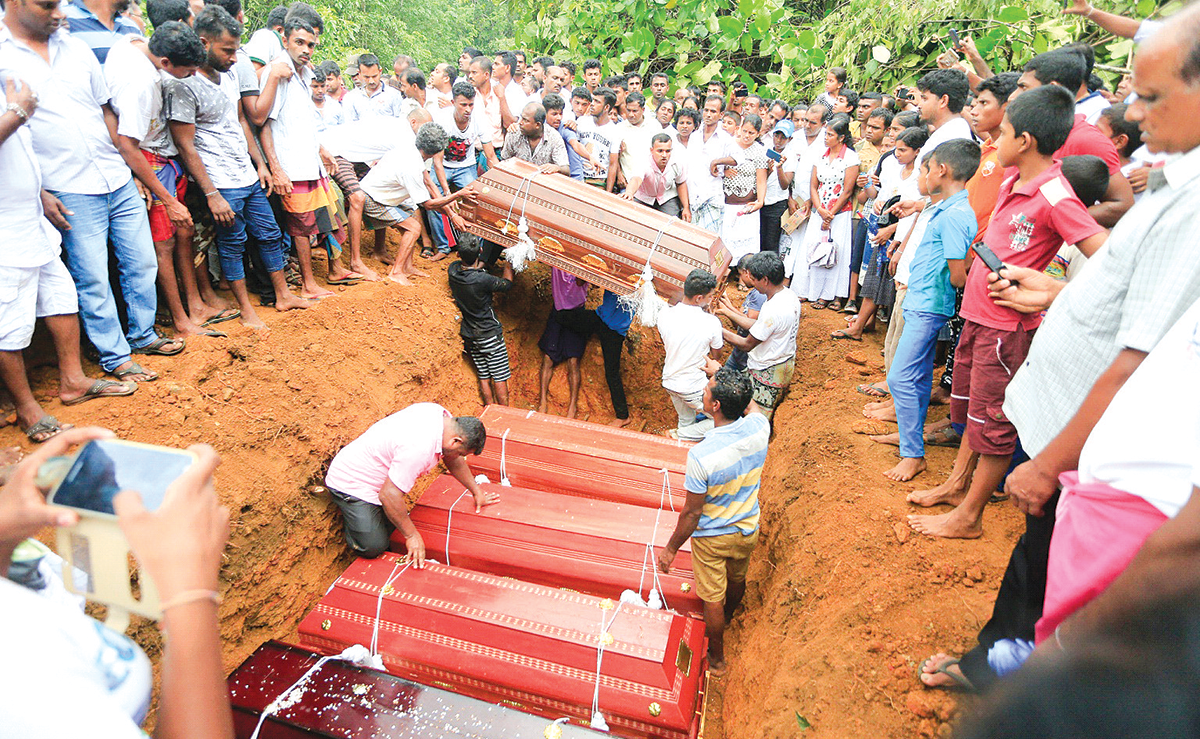
Eighteen Years of Delay:
Cyclone Ditwah has come and gone, leaving a trail of extensive damage to the country’s infrastructure, including buildings, roads, bridges, and 70% of the railway network. Thousands of hectares of farming land have been destroyed. Last but not least, nearly 1,000 people have lost their lives, and more than two million people have been displaced. The visuals uploaded to social media platforms graphically convey the widespread destruction Cyclone Ditwah has caused in our country.
The purpose of my article is to highlight, for the benefit of readers and the general public, how a project to establish a Doppler Weather Radar system, conceived in 2007, remains incomplete after 18 years. Despite multiple governments, shifting national priorities, and repeated natural disasters, the project remains incomplete.
Over the years, the National Audit Office, the Committee on Public Accounts (COPA), and several print and electronic media outlets have highlighted this failure. The last was an excellent five-minute broadcast by Maharaja Television Network on their News First broadcast in October 2024 under a series “What Happened to Sri Lanka”
The Agreement Between the Government of Sri Lanka and the World Meteorological Organisation in 2007.
The first formal attempt to establish a Doppler Radar system dates back to a Trust Fund agreement signed on 24 May 2007 between the Government of Sri Lanka (GoSL) and the World Meteorological Organisation (WMO). This agreement intended to modernize Sri Lanka’s meteorological infrastructure and bring the country on par with global early-warning standards.
The World Meteorological Organisation (WMO) is a specialized agency of the United Nations established on March 23, 1950. There are 193 member countries of the WMO, including Sri Lanka. Its primary role is to promote the establishment of a worldwide meteorological observation system and to serve as the authoritative voice on the state and behaviour of the Earth’s atmosphere, its interaction with the oceans, and the resulting climate and water resources.
According to the 2018 Performance Audit Report compiled by the National Audit Office, the GoSL entered into a trust fund agreement with the WMO to install a Doppler Radar System. The report states that USD 2,884,274 was deposited into the WMO bank account in Geneva, from which the Department of Metrology received USD 95,108 and an additional USD 113,046 in deposit interest. There is no mention as to who actually provided the funds. Based on available information, WMO does not fund projects of this magnitude.
The WMO was responsible for procuring the radar equipment, which it awarded on 18th June 2009 to an American company for USD 1,681,017. According to the audit report, a copy of the purchase contract was not available.
Monitoring the agreement’s implementation was assigned to the Ministry of Disaster Management, a signatory to the trust fund agreement. The audit report details the members of the steering committee appointed by designation to oversee the project. It consisted of personnel from the Ministry of Disaster Management, the Departments of Metrology, National Budget, External Resources and the Disaster Management Centre.
The Audit Report highlights failures in the core responsibilities that can be summarized as follows:
· Procurement irregularities—including flawed tender processes and inadequate technical evaluations.
· Poor site selection
—proposed radar sites did not meet elevation or clearance requirements.
· Civil works delays
—towers were incomplete or structurally unsuitable.
· Equipment left unused
—in some cases for years, exposing sensitive components to deterioration.
· Lack of inter-agency coordination
—between the Meteorology Department, Disaster Management Centre, and line ministries.
Some of the mistakes highlighted are incomprehensible. There is a mention that no soil test was carried out before the commencement of the construction of the tower. This led to construction halting after poor soil conditions were identified, requiring a shift of 10 to 15 meters from the original site. This resulted in further delays and cost overruns.
The equipment supplier had identified that construction work undertaken by a local contractor was not of acceptable quality for housing sensitive electronic equipment. No action had been taken to rectify these deficiencies. The audit report states, “It was observed that the delay in constructing the tower and the lack of proper quality were one of the main reasons for the failure of the project”.
In October 2012, when the supplier commenced installation, the work was soon abandoned after the vehicle carrying the heavy crane required to lift the radar equipment crashed down the mountain. The next attempt was made in October 2013, one year later. Although the equipment was installed, the system could not be operationalised because electronic connectivity was not provided (as stated in the audit report).
In 2015, following a UNOPS (United Nations Office for Project Services) inspection, it was determined that the equipment needed to be returned to the supplier because some sensitive electronic devices had been damaged due to long-term disuse, and a further 1.5 years had elapsed by 2017, when the equipment was finally returned to the supplier. In March 2018, the estimated repair cost was USD 1,095,935, which was deemed excessive, and the project was abandoned.
COPA proceedings
The Committee on Public Accounts (COPA) discussed the radar project on August 10, 2023, and several press reports state that the GOSL incurred a loss of Rs. 78 million due to the project’s failure. This, I believe, is the cost of constructing the Tower. It is mentioned that Rs. 402 million had been spent on the radar system, of which Rs. 323 million was drawn from the trust fund established with WMO. It was also highlighted that approximately Rs. 8 million worth of equipment had been stolen and that the Police and the Bribery and Corruption Commission were investigating the matter.
JICA support and project stagnation
Despite the project’s failure with WMO, the Japan International Cooperation Agency (JICA) entered into an agreement with GOSL on June 30, 2017 to install two Doppler Radar Systems in Puttalam and Pottuvil. JICA has pledged 2.5 billion Japanese yen (LKR 3.4 billion at the time) as a grant. It was envisaged that the project would be completed in 2021.
Once again, the perennial delays that afflict the GOSL and bureaucracy have resulted in the groundbreaking ceremony being held only in December 2024. The delay is attributed to the COVID-19 pandemic and Sri Lanka’s economic crisis.
The seven-year delay between the signing of the agreement and project commencement has led to significant cost increases, forcing JICA to limit the project to installing only one Doppler Radar system in Puttalam.
Impact of the missing radar during Ditwah
As I am not a meteorologist and do not wish to make a judgment on this, I have decided to include the statement issued by JICA after the groundbreaking ceremony on December 24, 2024.
“In partnership with the Department of Meteorology (DoM), JICA is spearheading the establishment of the Doppler Weather Radar Network in the Puttalam district, which can realize accurate weather observation and weather prediction based on the collected data by the radar. This initiative is a significant step in strengthening Sri Lanka’s improving its climate resilience including not only reducing risks of floods, landslides, and drought but also agriculture and fishery“.
Based on online research, a Doppler Weather Radar system is designed to observe weather systems in real time. While the technical details are complex, the system essentially provides localized, uptotheminute information on rainfall patterns, storm movements, and approaching severe weather. Countries worldwide rely on such systems to issue timely alerts for monsoons, tropical depressions, and cyclones. It is reported that India has invested in 30 Doppler radar systems, which have helped minimize the loss of life.
Without radar, Sri Lanka must rely primarily on satellite imagery and foreign meteorological centres, which cannot capture the finescale, rapidly changing weather patterns that often cause localized disasters here.
The general consensus is that, while no single system can prevent natural disasters, an operational Doppler Radar almost certainly would have strengthened Sri Lanka’s preparedness and reduced the extent of damage and loss.
Conclusion
Sri Lanka’s inability to commission a Doppler Radar system, despite nearly two decades of attempts, represents one of the most significant governance failures in the country’s disastermanagement history.
Audit findings, parliamentary oversight proceedings, and donor records all confirm the same troubling truth: Sri Lanka has spent public money, signed international agreements, received foreign assistance, and still has no operational radar. This raises a critical question: should those responsible for this prolonged failure be held legally accountable?
Now may not be the time to determine the extent to which the current government and bureaucrats failed the people. I believe an independent commission comprising foreign experts in disaster management from India and Japan should be appointed, maybe in six months, to identify failures in managing Cyclone Ditwah.
However, those who governed the country from 2007 to 2024 should be held accountable for their failures, and legal action should be pursued against the politicians and bureaucrats responsible for disaster management for their failure to implement the 2007 project with the WMO successfully.
Sri Lanka cannot afford another 18 years of delay. The time for action, transparency, and responsibility has arrived.
(The views and opinions expressed in this article are solely those of the author and do not necessarily reflect the policy or position of any organization or institution with which the author is affiliated).
By Sanjeewa Jayaweera
-

 Features5 days ago
Features5 days agoFinally, Mahinda Yapa sets the record straight
-

 News6 days ago
News6 days agoCyclone Ditwah leaves Sri Lanka’s biodiversity in ruins: Top scientist warns of unseen ecological disaster
-

 Features5 days ago
Features5 days agoHandunnetti and Colonial Shackles of English in Sri Lanka
-

 Business4 days ago
Business4 days agoCabinet approves establishment of two 50 MW wind power stations in Mullikulum, Mannar region
-

 News7 days ago
News7 days agoJetstar to launch Australia’s only low-cost direct flights to Sri Lanka, with fares from just $315^
-
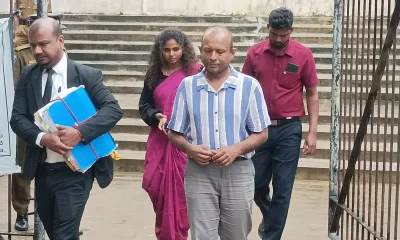
 News4 days ago
News4 days agoGota ordered to give court evidence of life threats
-
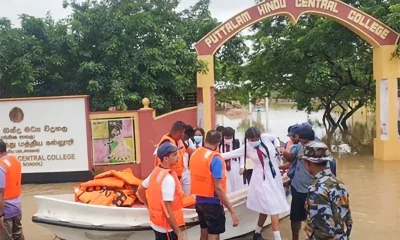
 Features6 days ago
Features6 days agoAn awakening: Revisiting education policy after Cyclone Ditwah
-

 Features4 days ago
Features4 days agoCliff and Hank recreate golden era of ‘The Young Ones’













